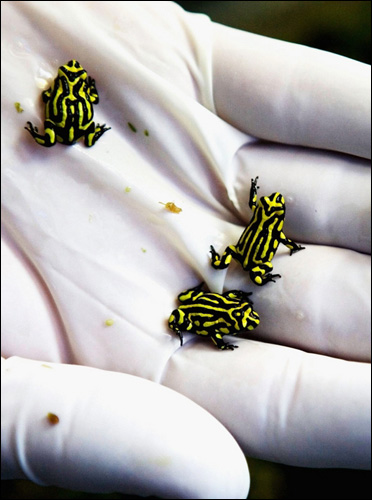tags: Corroboree Frogs, Image of the Day

Baby Corroboree Frogs walk across the gloved palm of reptile keeper Stuart Kozlowski at Taronga Zoo in Sydney, Australia. Around 130 of the endangered frogs are housed in a purpose built quarantine facility at the zoo to keep a safe population for genetic diversity.
Image: Ian Waldie/Getty Images.
What adorable lil'babies! Such an interesting pattern they have,all abit different yet alike. Is there a link to the picture? Is this species effected by that fungus? Thanks for posting!
yes, indeed these little frogs are affected by whatever it is that is killing amphibians worldwide (just a fungus? or a fungus plus a microbe? scientists are still trying to suss this out)
and no, there's no link to the pic (so far).
GrrlScientist - it's not just the fungus either. Amphibians are also rapidly disappearing in parts of the world too hot for the fungus. Some scientists think it's because climate change is leading a loss of leaf litter in some tropical forests. I've blogged about this here
like you, ed, i also wrote about this same phenomenon here although i was unable to convince PNAS to send me the paper itself -- buncha dorks!!
I can get you PNAS PDFs if you want. My office has site access.